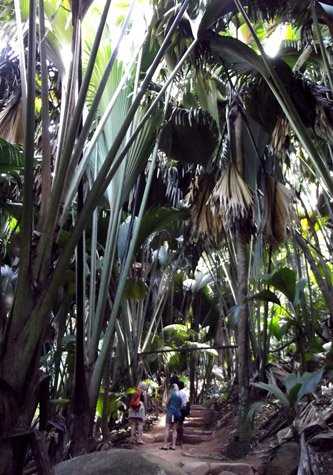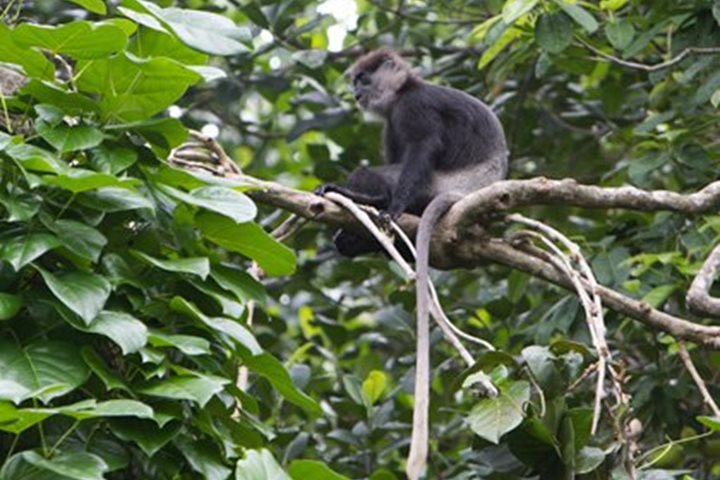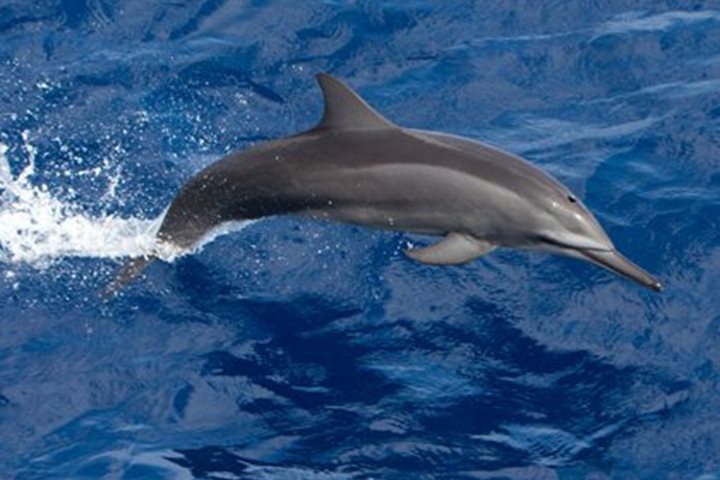We spent the morning on Praslin Island, the second largest of the Seychelles central granitic group (population about 6,500 people). Like Mahe, it has a mountainous ridge running on an east-west line down the center. The island’s main attraction is, of course, the famous Vallée de Mai, which is now a World Heritage Site. Vallée de Mai is one of the few climax palm forests in the world and is best known for its amazing and mysterious growth of coco de mer palms, an endemic species that is distinguished by having both the largest leaf and the largest seed in the entire world. This spectacular palm got its name centuries ago from the belief that it grew on the sea floor somewhere in the Indian Ocean, because it was only known from seeds that had floated ashore in the Maldives or other coastal regions. These rare specimens were carved into ornate containers and were worth a fortune. Only a few examples survive today. Right after breakfast, most of us went directly to the beautiful palm forest in order to enjoy hiking among the fascinating endemic flora, which also includes an additional five species of palms. In spite of the typical heat and humidity of this tropical island, conditions were quite pleasant walking in the shade of the giant palms. One of the highlights of our hike this morning was the sighting of a rare, endemic Seychelles black parrot. At the same time, several guests opted to spend the morning at the beautiful white coralline sand beach known as Anse Lazio, just one of many excellent beaches found here on Praslin Island.
During lunch, we sailed over to nearby La Digue (the fourth largest island, population about 2,500), where we spent the rest of the day. This is the ideal place to slow down to the Seychellois lifestyle and enjoy the gracious old colonial houses. A few shops dot the main street, so there was one last chance to spend our Seychellois rupees. In former times, copra and vanilla production were mainstays of the local economy, but today, La Digue’s main industry is tourism and the island is renowned for possessing one of the most scenic beaches in the world, Anse Source d'Argent. It is in all the travel brochures that advertise the Seychelles (including our own). Most of us toured the lower reaches of the island to see the main inhabited coastal region, L’Union Estate (where we drank coconut juice and saw some traditional dancing), a coconut plantation, a vanilla farm, and of course, Anse Source d'Argent. Walking about the coastal zone near the famous beach gave us more opportunities to admire some of the impressive granitic boulders and eroded formations. In addition, our most serious birdwatchers visited Veuve Nature Reserve to see several rare black paradise flycatchers, of which there are only about 100 in existence. As if all this were not enough, our SCUBA divers were offered a dive at each island—one off Praslin in the morning and another one near La Digue in the afternoon.







